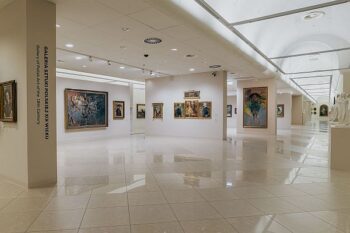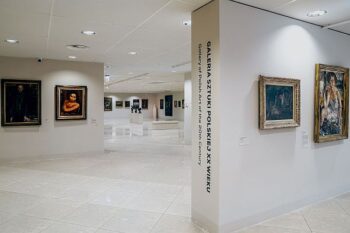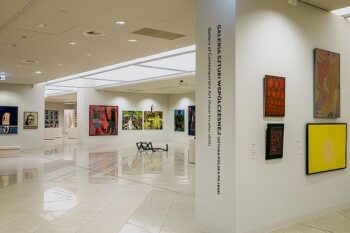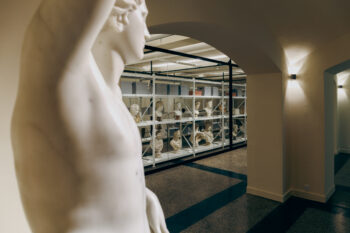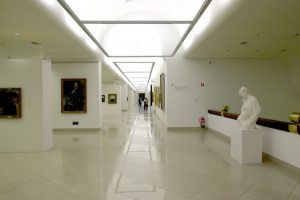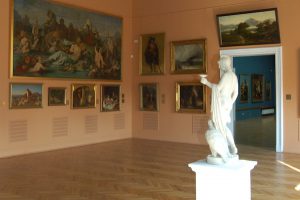The collection of Medieval Art at the MNP is small but diverse. It was mainly obtained in the 19th century by the Poznań Society of Friends of Science, the German Historical Society of the Province of Poznań and the Provinzial Museum. After World War II, the Gołuchów collection of art from that period, formerly belonging to Izabela Czartoryska Działyńska, was also included. The Medieval Art Gallery did not exist before 1939 as a separate collection. Its post–war creation was due to Gwidon Chmarzyński, the first post–war director of the Wielkopolska Museum. The medieval collection, which was then part of the Sculpture Gallery, was supplemented after World War II with 9 wooden sculptures of unknown Wielkopolska provenance, which were found in museum warehouses in February 1945. It was also then that Chmarzyński began to secure the post–war and former German artistic property, making the museum – as the farthest to the west – the central repository for the areas of Wielkopolska, Kujawy, Lubuskie Land and West Pomerania. The medieval collection was largely formed by 1947, when 64 sculptures were brought to the museum, which largely determined the character of the medieval collections: 8 monuments from Wielkopolska and Kujawy; 11 foreign objects brought from Wielkopolska estates; 15 from Lubuskie Land and 30 from West Pomerania.
Currently, the MNP collection of medieval art consists of 152 sacred art relics from Greater Poland, Lubusz Land and Western Pomerania. The collection is supplemented by deposits from Lower Silesia, as well as individual examples of South German and Lorraine sculpture. The exhibition consists of works of stone, wooden and panel painting created between the late 12th and early 16th centuries. The oldest works are the late Romanesque fragment of the head of Christ from the tympanum burned in Strzelno and the Crucifix from Marianów – a rare in Polish museum collections such a old crucifix, combining the stylistic features of two epochs: Romanesque and Gothic. The most representative of 14th century art are Madonna with Child from Lorraine (Workshop from Toul, ca. 1330) and the Marian Triptych from Szydłów (Lubusz workshop, late 14th century) – a kind of dedication to the Blessed Virgin Mary and the Collegium Apostolicum rarely encountered in Polish collections. The turn of the 15th and 16th centuries is best represented in the medieval art collection. From this period comes, among others, the figure of Christ on a donkey, one of two sculptures of this type in Polish collections.
The main areas of the exhibition are works illustrating the Passion of Christ, Marian iconography and images of saints. The layout of the gallery allows you to trace the transformations undergone by medieval art: from Romanesque through the idealizing style of the 14th century to the breakthrough of the 15th and 16th centuries. The exhibited artifacts belong to the area of sacred art and used to serve cult purposes. The exhibition shows the diversity of these objects that once filled medieval churches: from polyptychs (retabulum from Szydłów) and remains of altars (figures from Pomierzyn and Sławęcin) through single cult sculptures (two sculptures in the form of the head of St. John the Baptist on a bowl) and devotional representations (Pieta from Jeżewo), to figures of founders (statue of Duchess Salomea Głogowska). Particular attention should be paid to works of the most important European workshops: Madonna with the Child made in, Wings of the Altar from Dzikowice, created by the famous Silesian Master of the Altar from Gościszowice, Christ on the donkey created in Ulm, in the workshop of the Erharts and Madonna with the Annunciation scene attributed to the circle of Tilman Riemenschneider. Equally interesting are the artifacts from the Gallery of Medieval Art presented in Gołuchów Castle, such as St. Ursula from the Netherlands. This was purchased in Paris in 1852 by the Czartoryskis and is associated with the work of Jan van der Weerde.


